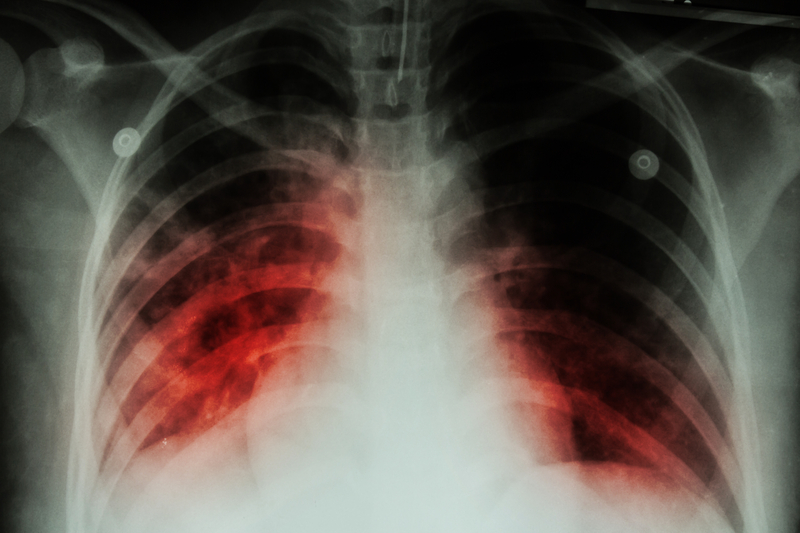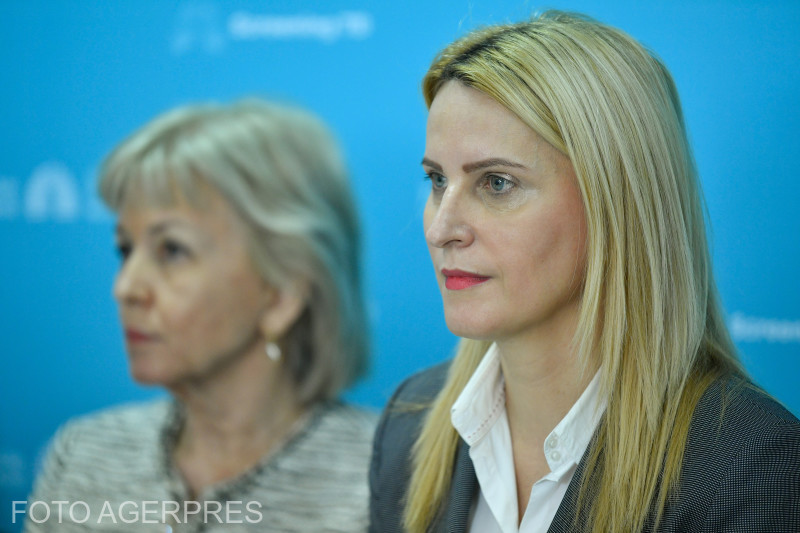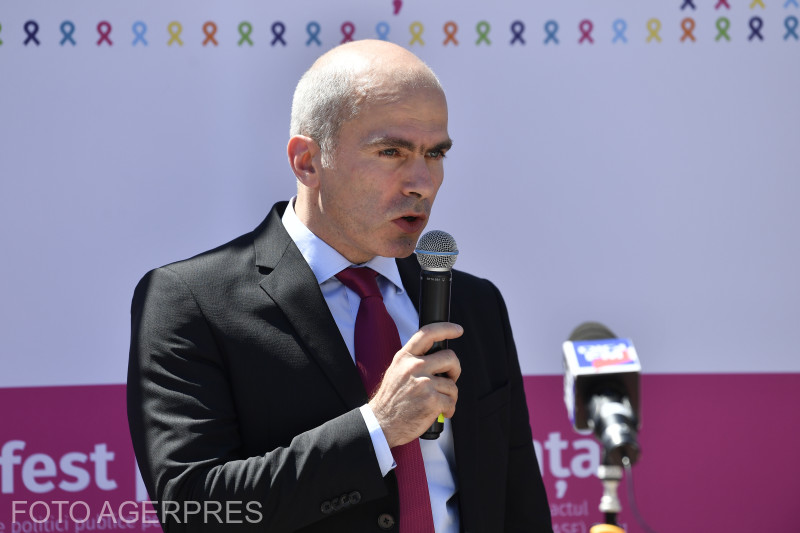
A little more than 12 thousand Romanians are diagnosed with bronchopulmonary cancer every year, and almost 11 thousand of them lose the battle with the disease, because in most cases, in addition to rapid development, we are also talking about cancer diagnosed in late stages. We are talking about an insidious disease in which sometimes tumors as small as 14 millimeters already have systemic metastases, says Dr. Beatrice Mahler, pulmonologist and head of the Marius Nasta Institute of Pneumophthisiology in Bucharest. The perception of bronchopulmonary cancer must change in Romania and it should no longer be associated with a disease that is often fatal, wants Cesar Irimia, president of the Federation of Cancer Patient Associations.
Currently, diagnosis takes months, and 60% of patients admitted to the Marius Nast Institute and 3 quarters of those admitted to the Bucharest Oncology Institute arrive at very late stages, already having metastases.
Breathe Easy, a project funded by the EEA Funding Mechanism 2-14-2021 (Iceland, Norway and Liechtenstein) and coordinated by the Federation of Cancer Patient Associations, is the first pilot screening project for bronchopulmonary cancer and idiopathic fibrosis in Romania.
The total budget of the project is 219,730 euros, of which 10% is the contribution of the Federation of Associations of Cancer Patients. The project activities will take place over a period of 12 months in the regions of Bucharest-Ilfov, Prahova, Calarasi, Dambovitsa, Giurgiu and Slobozia, and the project is aimed especially at vulnerable segments of the population.
The project was modeled after the Norwegian model for early detection of lung cancer, which uses LOADOS computed tomography scanning technology, which is also used by the UK, the United States, Sweden and, more recently, Croatia.
The president of the Federation of Oncology Patient Associations, Cesar Irimia, hopes that eventually, when the risk is reduced after this pilot project, the authorities will propose a national screening project for bronchopulmonary cancer.

Caesar Irimiya, president of the Federation of Associations of Cancer Patients / Photo: Agerpres
“We are the shame of Europe,” says Cesar Irimia, who is asking the authorities for prevention and screening programs and access to treatment for patients.
Bronchopulmonary cancer, most often diagnosed late in Romania. Many die before they are diagnosed
“Thanks to the implementation of this project, we facilitate the access of 500 people from the socially and medically vulnerable category, 10% of whom are Roma, to medical services for the detection of lung diseases. First of all, we aim to detect bronchopulmonary cancer and idiopathic pulmonary fibrosis in the early stages. In the implementation of the project, we will cooperate with the offices of family doctors and pulmonologists in the settlements where the target group is defined, starting with the initial consultation based on the risk questionnaire developed as part of the project. Of the 500 people consulted, we will limit screening to only 200 people who are at high risk and are strongly suspected of having respiratory disease. Thanks to the project, they will receive all the psychological support, but especially the financial one, in order to accurately diagnose the disease,” explains Manuela Vitsu, manager of the “Breathe easily” project.
“We will try to carry out specific studies as much as possible locally, because we know that there are many factors that can discourage a patient, but if there is no equipment or the necessary services locally, we will provide a trip and consultation of patients to the Bucharest Oncology Institute or to the Marius Nasta Institute, depending on the needs, and patients who will have a final diagnosis will enter the national treatment programs. The Federation of Oncology Patient Associations, as the initiator of the project, will provide the entire patient support structure, starting with a team of social workers who define the target group in the project countries. After that, the patient navigators will come, who will guide the patients throughout the diagnosis, up to the start of the treatment,” explains Manuela Vitsu.

Lungs / Photo: Puwadol Jaturawutthichai – Dreamstime.com
“We know very well that in Romania, bronchopulmonary cancer is detected late, from suspicion to a specific diagnosis. Lasts 5-6 months, and I am not exaggerating anything. That’s why we decided to oppose it,” says Cesar Irimia, president of the Federation of Associations of Cancer Patients.
Many of those suspected of having bronchopulmonary cancer “were not diagnosed because they lost their battle with the disease before they were diagnosed. So we thought of doing something to shorten the time during which the patient can be diagnosed faster and give him an extra chance to live,” emphasizes Caesar Irimia.
The president of the Federation of Associations of Cancer Patients wishes that at the end of this pilot project, the statistical data obtained will allow the Ministry of Health to create a national plan for the screening of bronchopulmonary cancer.
In Romania, according to the latest Globocan statistics, during the year 12,122 new people are diagnosed with bronchopulmonary cancer, of which 10,779 lose the fight against the disease. “89% of the death rate in newly diagnosed patients is within the first year,” says Caesar Irimia.
“We must have access to the most modern research and new drugs, which can often decide between life and death,” emphasizes the president of the Federation of Cancer Patient Associations.
Beatrice Mahler: 60% of patients who come to Marius Nasta with lung cancer already have metastases
Any initiative related to respiratory health is to be commended, and it’s important to think about our respiratory health, “especially since we’re talking about several pathologies that are somewhat neglected in terms of screening,” says Dr. Beatrice Mahler, head of the Marius Nasta Institute of Pneumophthisiology from Bucharest.
“If we talk about prevention and lung cancer, I think the pain is the greatest here, because the survival from the moment of diagnosis is very low, and the patients who enter the Marius Nasta Institute, at least according to the statistics of 2022. , 60% came with metastases, i.e. at the last stage of the disease,” emphasizes Beatrice Mahler.
In addition, the statistics of the first 3 months of 2023 indicate a 40% increase in the number of diagnosed cancers compared to 2022.

Beatrice Mahler, director of the Institute of Pneumophthisiology named after Marius Nasta / Photo: Agerpres
In most cases, patients have to wait months for a diagnosis, explains Beatrice Mahler: “We have a problem because we don’t have screening, because the patient is diagnosed while waiting in extremely long queues in offices and medical facilities. consultations – and here we, specialists, have to make and make decisions, because there is a need for cooperation between several specialties and between several institutes or persons responsible for diagnosis and treatment.”
“It is necessary for these people to know what health is, what it means to breathe well, what it means to breathe easily, what it means to go to the doctor when there are symptoms, and what the risks are of going to the doctor late. And I think that in terms of risk factors, Romania unfortunately also has polluted cities, and pollution directly affects the incidence of lung cancer, pulmonary fibrosis, chronic obstructive pulmonary disease. Smoking is also considered a risk factor for pulmonary fibrosis and chronic obstructive pulmonary disease. And, of course, from cancer as well. And we should not eliminate the genetic factor, which I think should be one of the questions that will be addressed to the risk group, because there is more and more data on the consequences or genetic diseases that influence the evolution of some lung diseases – says the manager of the Marius Nast Institute .
“We need projects like this, and I think that this, or I want to think that this is just a good start that we are making in the assessment of lung function and lung health of the population in a small area in Romania, which at the time was a model of good practice , to be able to expand it and apply it to the entire healthcare system,” adds Beatrice Mahler.
Bohdan Tenase: 3 quarters of patients who come to the oncology institute arrive late
Broncho-lung cancer is a major source of morbidity and mortality and is one of the most aggressive and underdiagnosed cancers, including worldwide, says Dr. Bohdan Tenase, manager of the Bucharest Oncology Institute.
“We have at our disposal an extremely expensive therapy for bronchopulmonary cancer – and here I mean immunotherapy, which quite easily enters our market and costs the Romanian state thousands of euros per month, but Romanian patients do not have access to modern diagnostic methods. “, the doctor emphasizes.
It shows that only 25% of patients admitted to the Bucharest Oncology Institute receive curative treatment. The remaining 75% are most often either locally advanced or in the metastatic stages, and even if they benefit from treatment, the treatment can no longer have a curative purpose, it is too late.

Bohdan Tenase, director of the Bucharest Oncology Institute / Photo: Agerpres
The Romanian state sometimes spends 3,000 euros a month on immunotherapy, which is applied to some patients with metastatic diseases and which really impressively increases their life expectancy from 6 months, as it was 10 years ago, to 3-4 years, but “at the moment when the treatment ceases to work, the matter is almost over for the relevant patients,” says Bohdan Tenase.
Instead, the Romanian state does not invest in screening, although “an economic calculation should be made and see if the screening program will get the money invested. But at some point we have to start somewhere.”
Dr. Tenase also highlights the fact that the Bucharest-Ilfov region, one of the regions where this pilot screening program will be carried out, is developed but also one of the most polluted, and “particle pollution below 5 nanomicrons is a recognized risk factor for bronchopulmonary cancer . In addition, the prevalence and incidence of smoking as a habit is high in this region. So I think after, from my point of view, in this region where we live, there is a large population at risk for bronchopulmonary cancer, so this pilot screening program needs to be started somewhere, the results of which we await. .”
Photo: Dreamstime.com, Agerpres.
Source: Hot News
Ashley Bailey is a talented author and journalist known for her writing on trending topics. Currently working at 247 news reel, she brings readers fresh perspectives on current issues. With her well-researched and thought-provoking articles, she captures the zeitgeist and stays ahead of the latest trends. Ashley’s writing is a must-read for anyone interested in staying up-to-date with the latest developments.